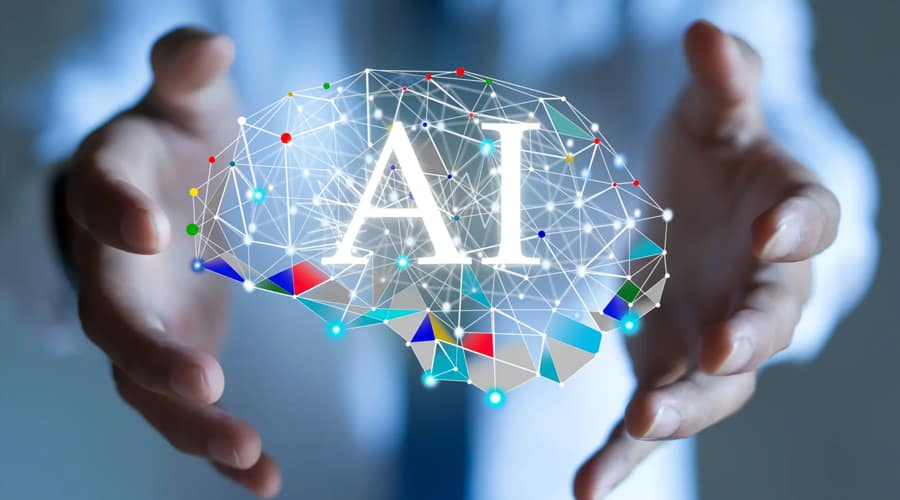
Artificial intelligence is an innovation that is changing all social statuses. It is a wide-ranging tool that empowers individuals to reevaluate how we incorporate data, analyze information, and utilize the subsequent insights to improve decision making. AI is getting into the realms of policymakers, opinion leaders, and interested observers, and exhibits how AI as of now is modifying the world and bringing up significant issues for society, the economy, and governance.
Artificial intelligence algorithms are intended to make decisions, frequently utilizing real-time information. They are different from passive machines that are competent just for mechanical or predetermined reactions. Utilizing sensors, digital information, or remote inputs, they consolidate data from a wide range of sources, examine the material in a split second, and follow up on the insights obtained from those data. With the enormous enhancement in storage systems, processing speeds, and analytic procedures, they are fit for huge advancement in analysis and decision making.
The first generation of AI was ‘descriptive analytics,’ which responds to the inquiry, “What occurred?” The second, ‘diagnostic analytics,’ addresses, “For what reason did it occur?” The third and current age is ‘predictive analytics,’ which addresses, “In view of what has just occurred, what could occur later on?”
The idea of artificial intelligence is one that was viewed as incomprehensible only five years prior. Regardless, organizations, for example, Google, Amazon, and IBM are effectively trying to think of options, and various other companies have likewise figured out how to make it usable. Computational instinct is maybe a more exact term since algorithms assess data relations instead of data properties, which is essentially how AI works. In explicit, these algorithms can recognize new and still undetected phenomena, for example, cybercrime in what is by all accounts innocent transactions.
Artificial intelligence can be reached out to pretty much every field, but substantial advancement in financial services is at present being made. Gigantic worldwide banks are continuously utilizing it to identify complex emerging cyber-crime techniques, including bribery, ATM hacking, and tax avoidance. Suspicious financial events are normally shrouded away in the piles of transactions that have their own collection of related criteria.
While predictive analytics can be useful and save time for data scientists, it is still completely subjected to historic data. Data scientists are hence left defenseless when confronted with new, obscure situations. To have true “artificial intelligence,” we need machines that can “think” all alone, particularly when confronted with a new circumstance. We need AI that can examine the data it is shown, yet express a “hunch” when something doesn’t make any sense. So, we need AI that can mirror the human instinct. Fortunately, we have it.
“I predict that AI will finally move toward its fourth generation, in which computers will be trained to do things that historically only human beings could do. They will display common sense, gut feelings, and Artificial Intuition: the ability to make deductions based on very partial information. We at ThetaRay are at the forefront of this new development”, says Mark Gazit, CEO of ThetaRay
“I believe that one of the most promising areas for AI will be fintech applications, especially during the current global health crisis. The ability of financial institutions to know and identify their customers has become more difficult. It has become incredibly challenging to create rules and build automation-based systems when customer behavior has changed so drastically. Banks now require computers that can take the place of very senior, experienced bankers and investigators. Criminals are increasingly using AI to commit financial cybercrime, so banks need an advanced level of artificial intelligence and intuition to detect and defeat them.”
He further adds that historically, algorithms were more about machine learning and neural networks. We are now seeing more and more machines that are self-contained and can teach and train themselves in a way that is remarkably similar to the subconscious part of the human brain. In other words, algorithms used to mimic the analytic part of the brain; now they are mimicking the largest, most powerful, and most intriguing part of the human brain, which we call common sense, gut feelings, and intuition. Instead of relying on human beings to train and teach them, today’s unsupervised machine algorithms are able to gather massive amounts of data, create pictures of the world, and make deductions that are very similar to ones that would be made by human beings. We’re coming into a world where computers can train themselves.
The fourth generation of AI is ‘artificial intuition,’ which empowers computers to recognize threats and opportunities without being determined what to search for, similarly as human instinct permits us to settle on choices without explicitly being told on the best way to do as such. It’s like a seasoned detective who can enter a crime scene and realize immediately that something doesn’t appear to be right, or an experienced investor who can detect a coming pattern before any other person. The idea of artificial intuition is one that, only five years prior, was viewed as unthinkable. In any case, presently organizations like Google, Amazon and IBM are attempting to create solutions, and a couple of organizations have just figured out how to operationalize it.
Share This Article
Do the sharing thingy
Source: https://www.analyticsinsight.net/are-we-entering-into-the-fourth-generation-of-artificial-intelligence/